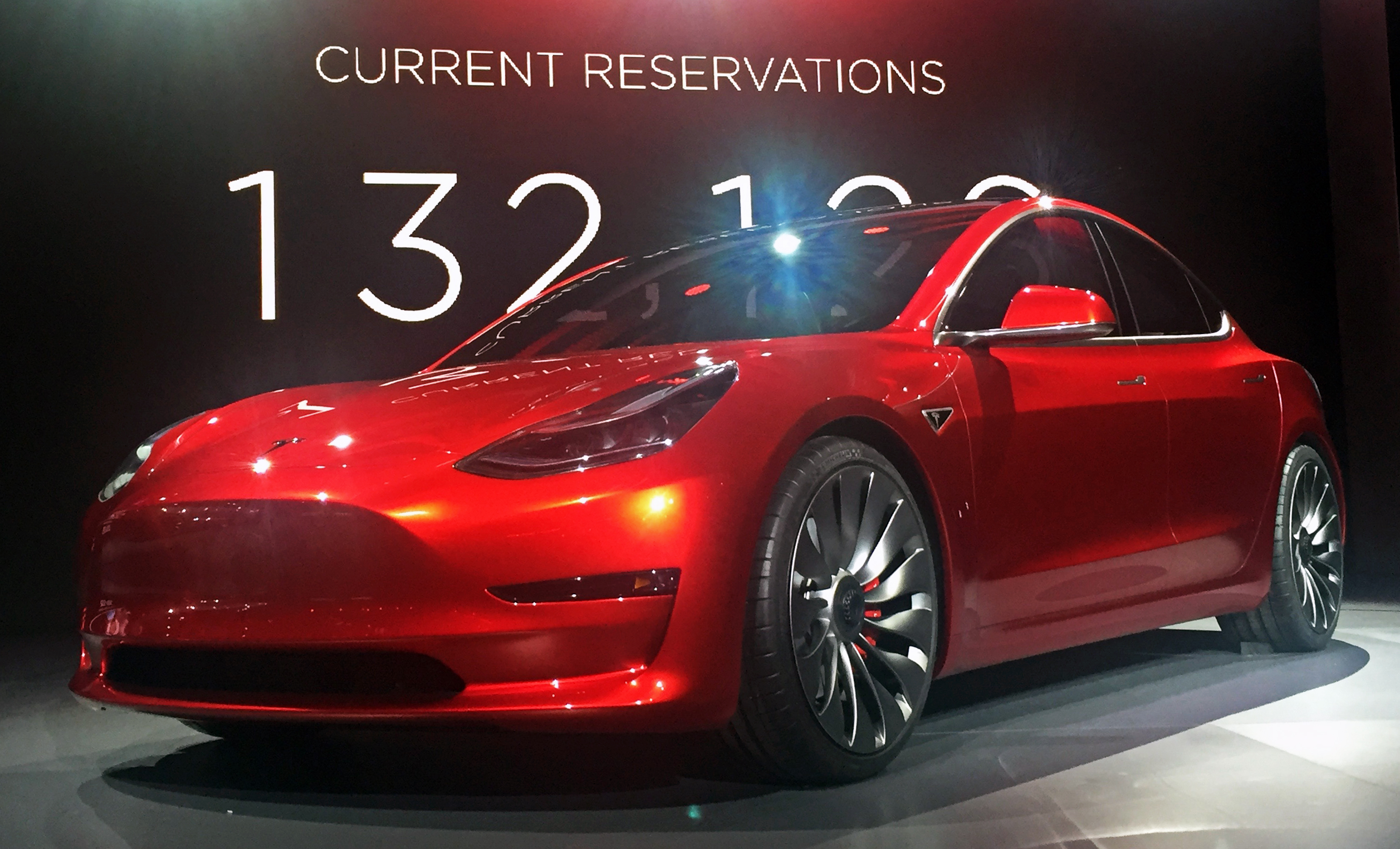We’ve talked a bit about the Tesla Model 3 before, back when we first caught wind of its announcement. It’s been a few months, and by now you’ve likely already heard rumors regarding the car’s design, the reveal of Tesla working with Panasonic to create the Model 3 power cells, and seen YouTube video of Model 3 prototypes on the road.
All well and good, but the most pressing questions on the mind of many critics and supporters are regarding production: When will the first Model 3 cars hit the market? Will Tesla be able to boost production to meet pre-order demand? Will interest in the Model 3 and pre-order demand remain high by the time production is fully underway?
There have already been close to 400,000 Model 3 pre-orders, and as of yet the only date provided for the first delivery of vehicles is the somewhat nebulous date of “late 2017.” According to CNET, CEO Elon Musk has stated that Tesla is estimating an initial production run between 100,000 and 200,000 in 2017, and an increased production of 500,000 in 2018.
A bold claim, one that Musk himself admits sounds “impossible.” Tesla has developed something of a reputation for over-promising, particularly with the Model X, and critics often point to Tesla’s previous production numbers as a barometer by which to judge how the Model 3 shall fare: Back when the Model S was first introduced in 2013, Tesla had a production rate of approximately 400 cars per week.
Fast forward to present day. In the first quarter of this year they produced 12,420 Model S vehicles and 2,400 Model X vehicles. In Q2 they recently hit a production rate close to 2,000 cars per week and produced 18,345 vehicles for the quarter. A significant milestone, and one that puts them in a better position to meet their goal of 80,000-90,000 vehicles for 2016. Still, if that’s the best consumers can expect for the Model 3, then many of them will not be receiving their vehicles until 2018 at the earliest, or so the conventional wisdom of critics tells us.
What if Tesla’s up to the challenge though? Naysayers have been quick to point to the company’s previous woes, and that only more experienced automakers have been able to run plants with a 500,000 vehicle per year output, but haven’t considered that the Model 3 will be easier to produce, or given credit to steps Tesla’s taken to meet the challenge of stepping up their game.
Elon Musk has stated that Tesla is prepared to drop suppliers who cannot meet their deadlines and are willing to internally assemble components necessary to meet their demands. They’ve improved efficiency at their Fremont factory, and have other production facilities (The Gigafactory and a proposed plant in China) in the works to handle increased demand after optimizing the manufacturing process in California.
Will customers who put down deposits on a Model 3 be willing to wait that long for an affordable electric car, or will they be tempted away by other entries into the scene that are vying for Tesla’s share of consumers? Alternative EVs like the Chevy Volt, Nissan Leaf, and BMW i3 are already available and making waves of their own. Mercedes is making plans to enter the contested EV arena, and the Chevy Bolt is shaping up to be a fierce (and competitively priced) challenger as well. Tesla has never had problems with generating press, but could be in for a fight with the amount of affordably priced competition flooding the market.
In spite of all this, it might not be wise to completely count Tesla out just yet. Demand for their vehicles and interest in the company remains high (even after some recent setbacks), and the added competition means that they’ll have to be meticulous in ensuring the quality of the Model 3 in order to remain competitive. They’ve bounced back from the brink before, perhaps they can shock doubters yet again?
What do you think? Will Tesla manage to hang tough, or are their days numbered? Let us know in the comments!

